Carefully crafted your cold emails but not sure when to send them to get replies?
We analyzed the reply rates of millions of cold email campaigns to find the best day and time to email someone.
One particular time slot scored 25% more replies than the next best one!
Read on to learn how to make your outreach more effective by sending emails at the right time.
What is the best day of the week to email someone?
We analyzed the data and found out that Monday is the best day if you want to get more replies.
How do we know?
We conducted our own study of millions of lemlist cold outreach campaigns to find out which day of the week is best for sending emails.
Of course, studies like this already exist, and many claim that the best days for emails are Tuesday-Thursday.
However, some of the most frequently cited studies, like Brevo or Marigold’s, determine the best day to send an email based on open rates or clicks. Tracking stats like these won’t help you book more meetings or make more sales.
Sales outreach pros know that plenty of prospects will open an email without ever following up. Plus, you’re not likely to sell the product in the first email. You’re aiming to get to the next step: a call, a meeting, or a reply.
So instead of tracking open rates, we looked for what salespeople and marketers really want: more replies!
And when you look at the reply rates, Monday is the clear winner, followed by Tuesday, Wednesday, or Thursday. Friday, Saturday, and Sunday have the lowest average reply rates, so we don’t recommend you send cold emails on the weekend.
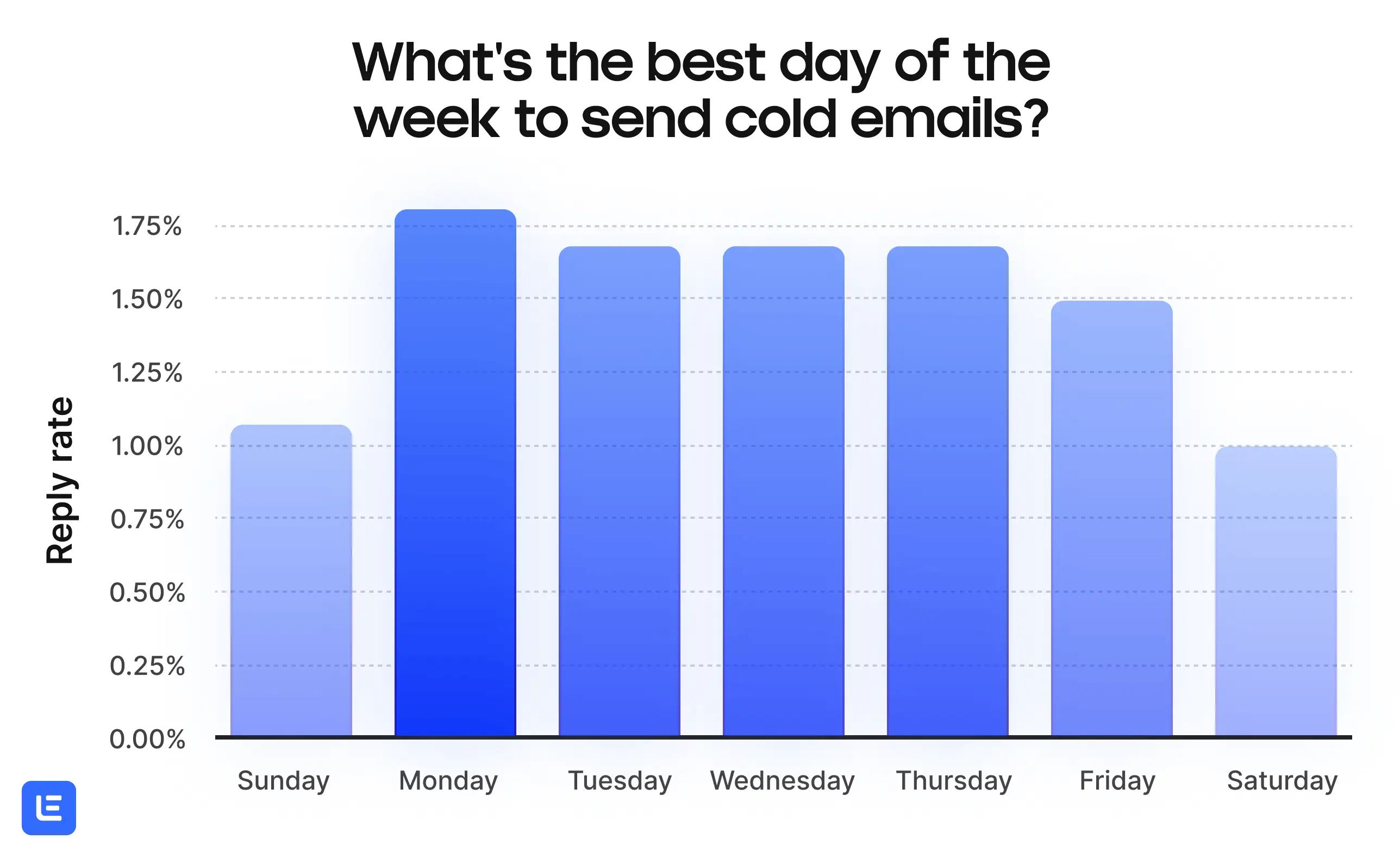
Keep in mind that this data reflects the day that the emails were sent, not the day that prospects replied. In some cases, prospects replied within hours, and in other cases it might have taken them a couple of days.
In either case, more leads replied to the emails sent on Mondays.
There are a few possible reasons for this:
- Sending your email at the start of the week keeps it at the top of prospects’ minds
- Prospects have more time to reply to the email throughout the work week, as opposed to losing track of it over the weekend
- So many salespeople and marketers follow the common recommendation to email Tuesday-Thursday that Monday has become less saturated
Of course, if everybody starts sending emails on Monday, then prospects’ inboxes will get overwhelmed. So another day will become the best day to send emails.
Now that we’ve established that Monday is the best day of the week for cold emails let’s take this a step further.
Do you know the best time of the day to send emails?
Well, we have a data-based answer for that as well. So let’s take a look.
What is the best time of day to send cold emails?
According to our analysis of millions of cold outreach campaigns, the best time of day to send cold emails is in the morning, between 8 and 10 AM.
This means that your message is the first that your prospects see when they log in, and it’s less likely to get lost in the inbox.
To test this, we divided the day into time slots and measured the average reply rates for emails sent in each of these blocks.
Perhaps surprisingly, the timing with the highest reply rates comes before the official workday even begins: 5-8 AM. The next best time is at the very beginning of the day, from 8 AM to 12 PM, and the success rate decreases as the day goes on.
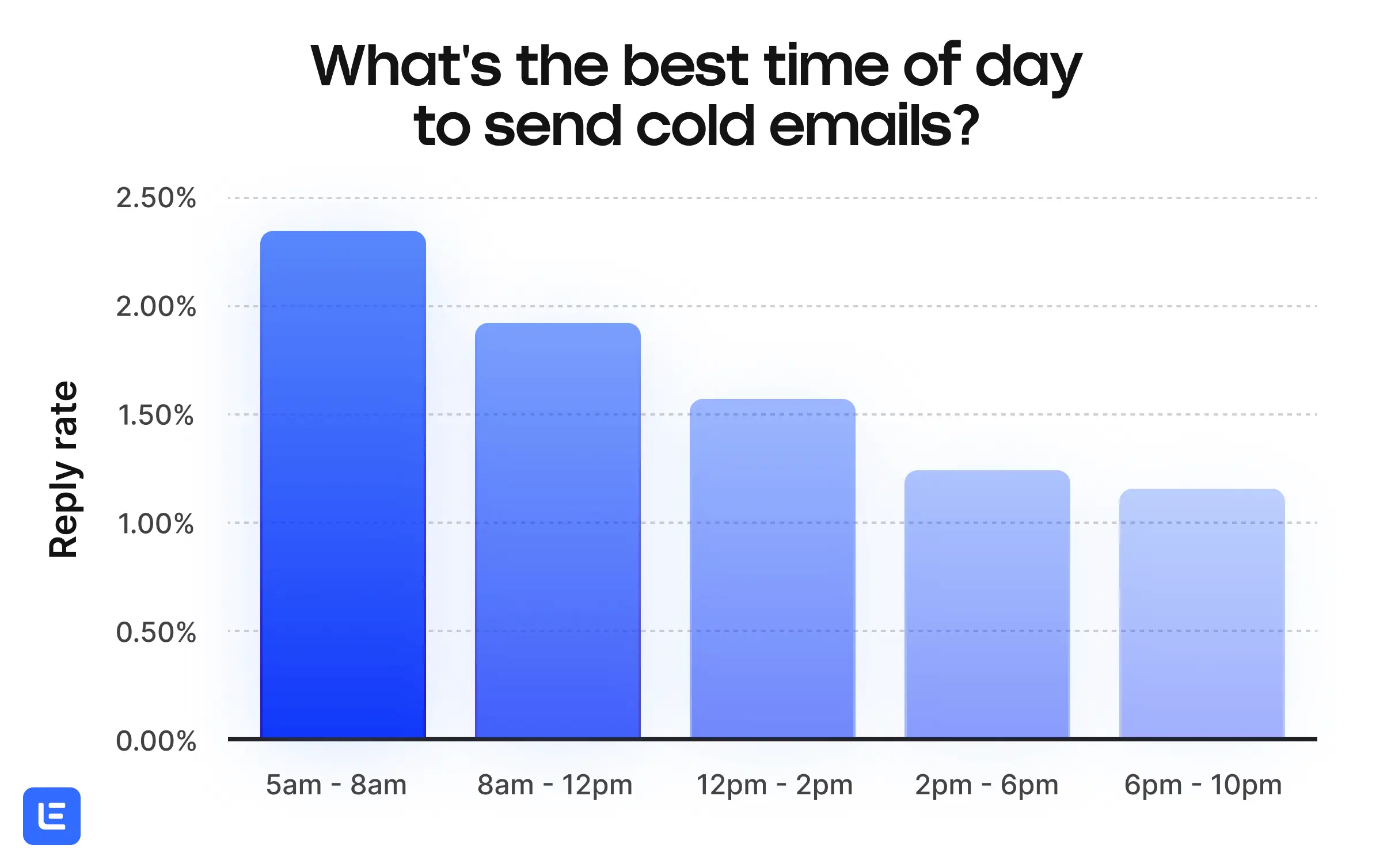
As was the case in our analysis of the best day to send emails, this data reflects the tie the emails were sent, not the time when the prospect responded.
Also, we measured the timing according to the prospects’ local time zones. That is, if email A was sent at 7 AM PST and email B was sent at 7 AM CET, both local to their senders’ respective time zones, then both emails count in the 5-8 AM column.
The lesson here: send your emails early! If you don’t want to start your workday at dawn every day, you can draft your emails and schedule them in advance.
lemlist makes scheduling your emails really easy:
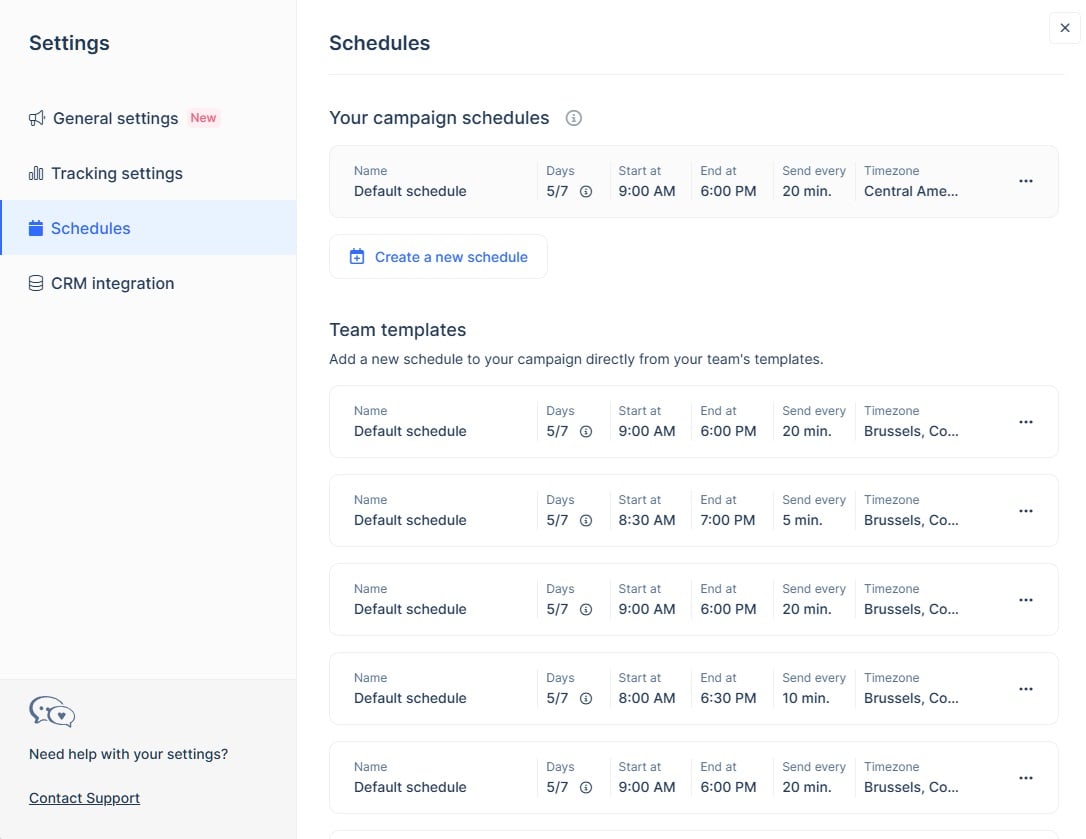
No matter what the data says, when it comes to the best day to send cold emails, you have to track your results. Focus on the dates and times when your prospects are most responsive.
Of course, you can A/B test your cold emails to figure when the best time to reach out to your prospects.
5 Cold email tips to get more replies
Here’s a cold email structure to follow if you want to increase reply rates and book more meetings:
1. Use a subject line that grabs attention
Here are 6 proven tactics of cold email subject lines with > 80% open rates:
✅ Keep your subject between 1-8 words
✅ Write personalized subject lines
✅ Ask a question – if it’s relevant
✅ Keep your subject line casual
✅ Add urgency
✅ A/B test your cold email subject lines
For in-depth information and data on each of these tips, plus examples of successful subject lines, read the complete guide to B2B cold email subject lines.
2. Start your email with an engaging hook
The beginning of your email should grab prospects’ attention and deliver value right away. Keep it short (between 4-12 words), and align it with your prospects’ tone of voice.
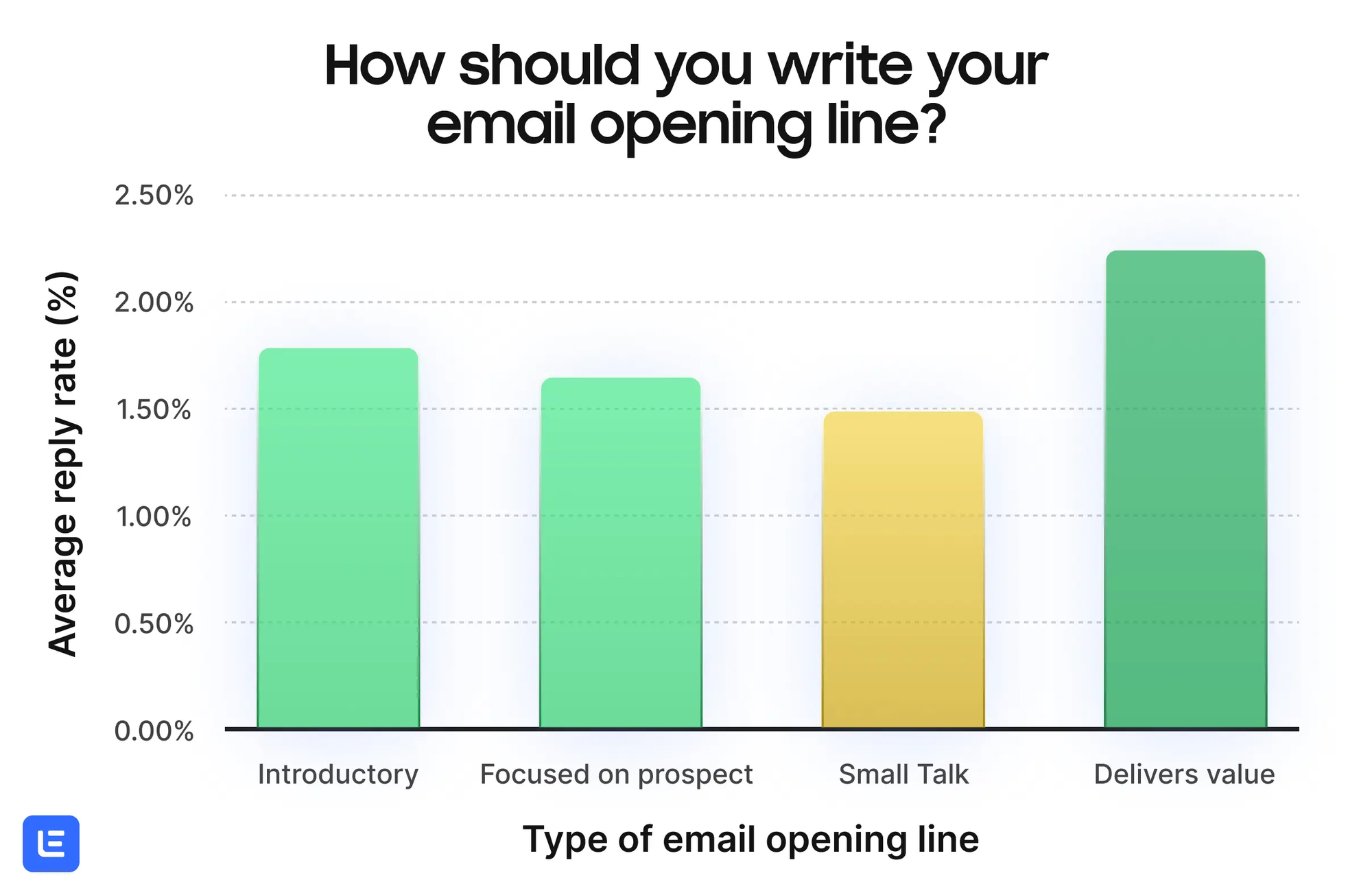
However, it’s not always easy to come up with the best way to start an email. We recommend you focus on the person you’re emailing and deliver value within the first lines.
3. Start your email with an icebreaker
Alternatively, a good way to start an email is with an icebreaker, a friendly opening statement that starts a conversation and creates a positive first impression. An icebreaker is often a humorous remark.
lemlist uses AI to generate a unique icebreaker for every one of your leads.
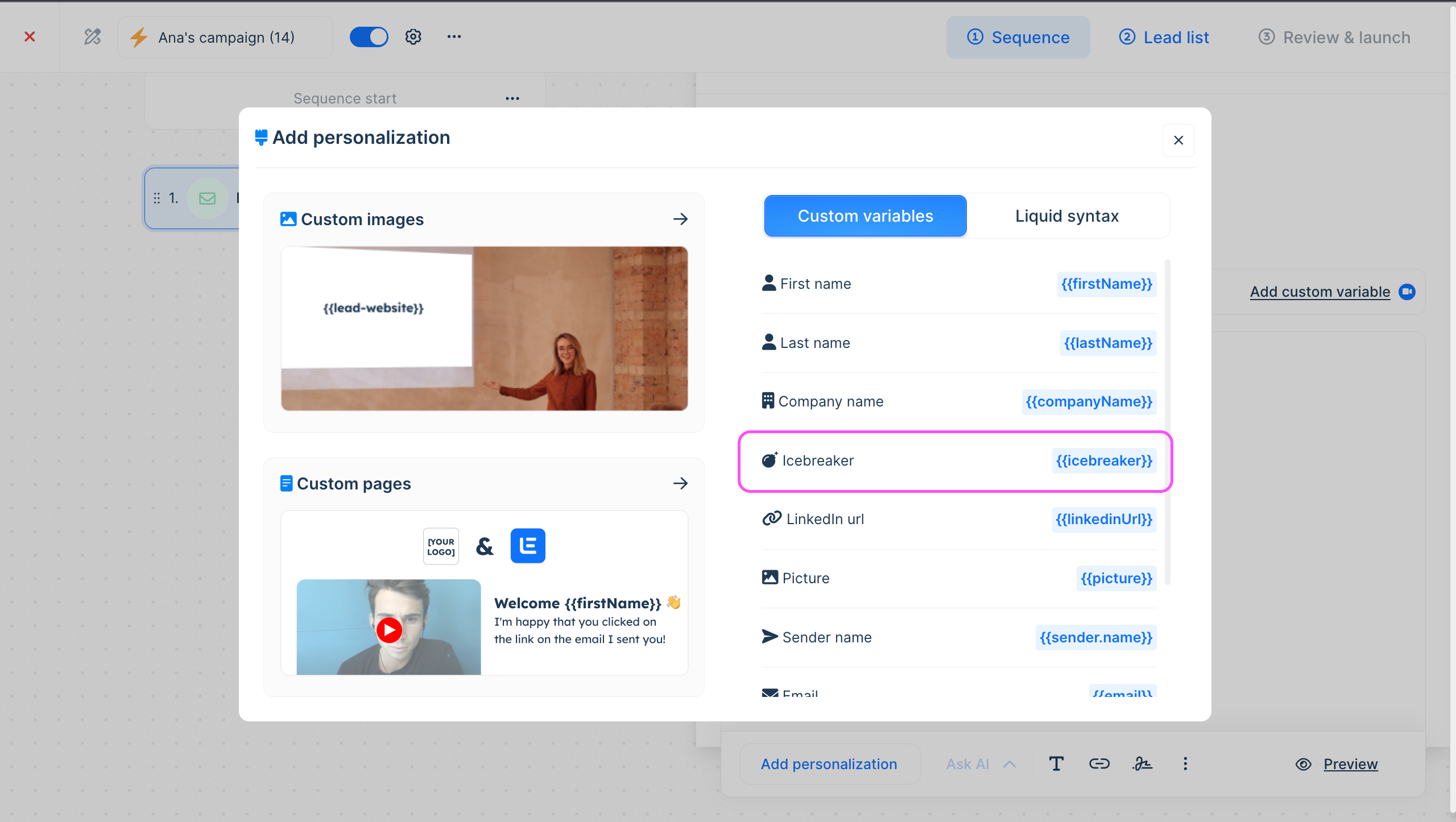
4. Write a pitch that converts
Your prospects receive hundreds of sales messages every week. To catch their attention and get replies, your pitch has to stand out and show them how you can solve their pain points.
This helps you build connections, get more replies, and close more deals.
But, most salespeople write self-centered pitches without meetings booked, putting their business at risk. To avoid this mistake, focus on an effective cold email strategy.
5. Seal the deal with your call to action
Here are some tips to keep in mind when you write your cold email call to action.
These are based on an analysis of millions of successful lemlist cold email campaigns, so that you can pinpoint exactly what works.
✅ Align the call to action with your pitch
✅ Only use 1 call to action per email
✅ Make sure your CTAs are clear and visible
✅ Keep your cold email CTAs short and direct
✅ Personalize your call to action
For more data and examples on the best cold email calls to action, use this data-driven guide on cold email CTAs.
The Key Takeaways
Here’s everything to keep in mind about the best day and time to send cold emails:
- Mondays are the best day to send emails if you want more replies
- Send emails in the morning – right before the workday starts
- For more success, craft brief and personalized subject lines, write value-packed opening lines, connect it to your pitch, and sign off with a clear call to action
Want to try out the most advanced AI-powered cold email platform to get more customers? Give lemlist a try, for free. No card info required.
Your source of actionable outreach tips and strategies that will help you get replies and grow your business.

